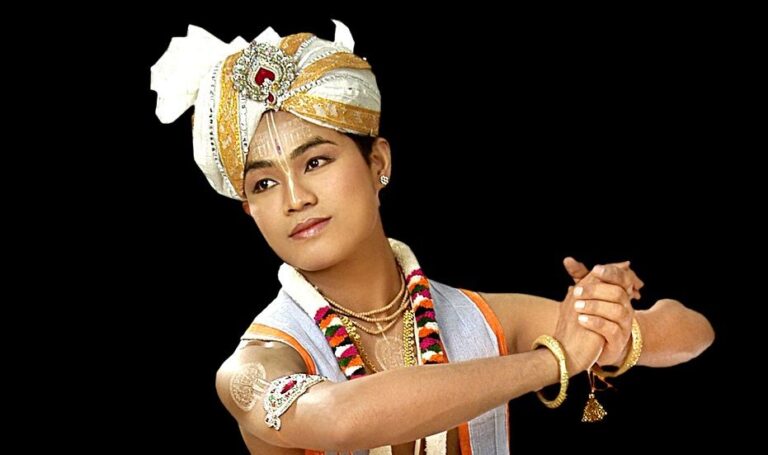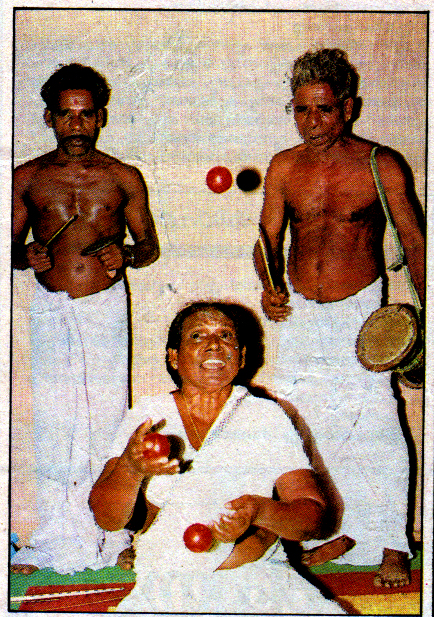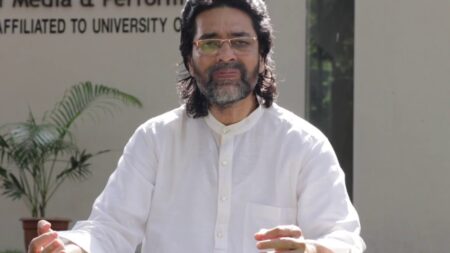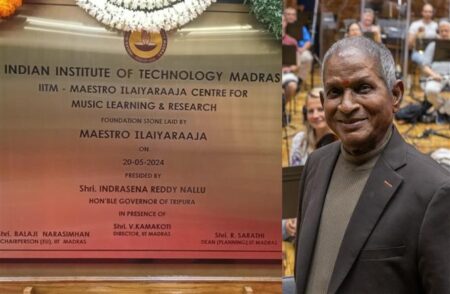Sinam Basu Singh, 33, is a Manipuri dancer, choreographer and researcher. He received training in the Northeastern classical dance from Santiniketan after initial lessons at Jawaharlal Nehru Manipur Dance Academy in Imphal. An A-grade artiste of Doordarshan, he is active with Spic-Macay that promotes classical arts among the youngsters. Sinam has won the Sangeet Natak Akademi’s Ustad Bismillah Khan Yuva Puraskar and a national scholarship from the Union Ministry of Culture, among others. After marriage 2016, he dances with his wife Monika Sinam as well.
What does Manipuri dance mean to you?
Manipuri dance is everything to me. It is very close to my heart. It has a rich cultural tradition and is very unique from other dance forms. Locally, we call it Jagoi. The dance has two periods: Vaishnava, with Raas-Leela, and one before it, called Lai Haraoba. Both continue to be performed in temples and other events.
For every Manipuri, dance and music are part and parcel of their lives. We dance for the glory of gods and goddesses. That way, dance is worship for us. We go to Govinda-ji temple to worship Raas-Leela, not as entertainment. Most of the choreography revolves round nature and god.
What has been your performance profile so far?
I have choreographed quite a few dance-dramas and ballets besides solo dance in Manipuri. As part of the Spic-Macay’s festivals and schedules, I’ve done close to 300 lecture-demonstrations and workshops in various schools and colleges, besides performances, across the country. Abroad, I have presented the dance in Russia, Australia, Japan, Vietnam, Thailand and the US, also holding workshops and giving lec-dems. At present, I am a choreographer at Progressive Art Laboratory in Imphal. It is an institution for dance and music.
What are the acts you mostly like to perform on?
I stage Raas-Leela, which is about the love between Radha and young Krishna. Then there is Geet-Govindam, which also involves a communion with god through their relationship. I also perform Shiva Panchakshara (devotional literature set to Manipuri beats) and Lasya Tandava (vigorous dance that retains feminine grace).
Which choreography is most dear to you?
Well, in recent years I presented two items of novel choreography.
I choreographed them in 2018 and the next year. The first one was ‘Laigi Machasing’, meaning ‘Children of gods and goddesses’. Here, I conceived an act with an idol of Pakhangba (python) which we revere as god. That was used as a moving prop, with by 20 artists performing.
I believe the universe is a garden. And that each flower represents a community, a state or a nation. I tried to convey this message through my choreography in 2019 and it was well received by the audience. The act of 2019 was called ‘Manipur-Jewel of India’.
Lai Haraoba. Can you brief about it?
‘Lai’ means god and ‘haraoba’ means festival. Lai haraoba is a festival of rites and rituals, games and sports, dance and music. It is a pre-Vaishnavism dance tradition observed by Meitei people. It is performed in more than a thousand temples…in almost every village and town of Manipur. What makes it unique is that it is not just a festival; it is a tradition deeply rooted in the lives of the common people. Lai Haraoba has 364 hand-gestures that represent various dos and don’ts of our lives. For example, there are portrayals on how to cultivate a crop, how to make a house. They are intertwined with the daily lives of the people.
Do you perform to recorded music too?
We perform to live music during lecture demonstrations that include half-a-dozen artistes. We chiefly play the Pung, which is a percussion instrument. While conducting workshops, I use recorded music.
The costumes are pretty interesting. What are they called?
Manipuri dance is known for various aharya abhinaya — acting with costumes. For Krishna in Raas-Leela, the costume is called Natavara vesh. For the character of Radha, it is called Radha-potloi and for gopis, it’s called gopi-potloi.
What are your upcoming projects?
I am currently choreographing a dance-drama on NavaDurga. That is, nine goddesses. It will be a production of our Progressive Art Laboratory.




